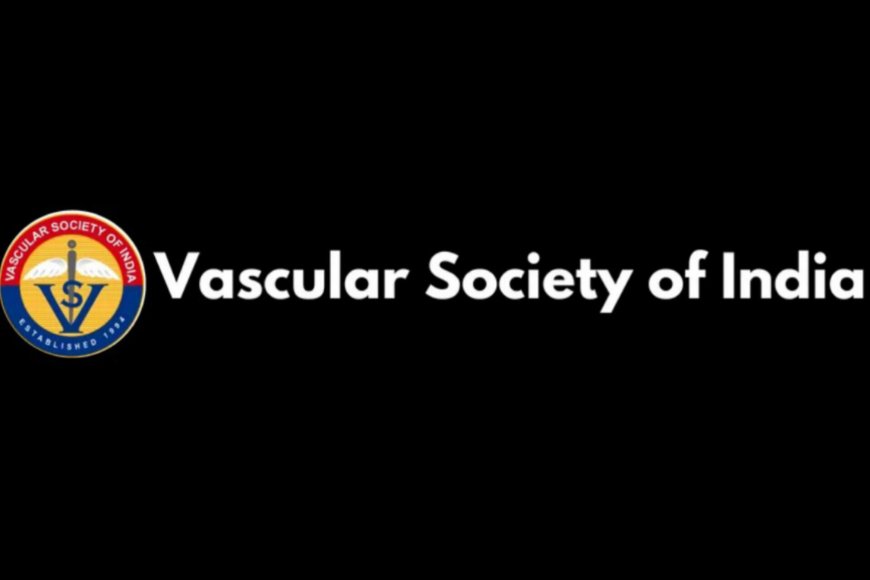Clearing the Path: Fighting Carotid Artery Disease Before It Strikes"

The Vascular Society of India is proud to dedicate a special awareness week from August 3-9, coinciding with National Vascular Day on August 6, to highlight the growing threat of carotid artery diseases (CAD).
Why It's Crucial to Understand Carotid Artery Disease
Carotid artery disease, or carotid artery stenosis, is a condition where the carotid arteries—the two main blood vessels in your neck that supply blood to your brain—become narrowed. This narrowing is primarily caused by atherosclerosis, a buildup of fatty deposits called plaque. This plaque can restrict blood flow to the brain, which can lead to a stroke. A stroke occurs when the brain is deprived of oxygen and nutrients, leading to cell death and potential permanent disability or even death.
It's vital to be aware of the signs and symptoms because, unfortunately, many people with CAD don't experience any symptoms until they have a transient ischemic attack (TIA) or a stroke. TIAs, often called "mini-strokes," are temporary episodes with stroke-like symptoms that serve as a crucial warning sign of an impending, more serious stroke. Ignoring these warning signs can have dangerous consequences.
Common signs of a stroke or TIA to watch out for include:
-
Sudden numbness, weakness, or tingling on one side of the face, arm, or leg.
-
Sudden difficulty speaking, slurred speech, or trouble understanding others.
-
Sudden loss of vision or blurred vision in one or both eyes.
-
Sudden dizziness, loss of balance, or difficulty walking.
Who Is at Risk for Carotid Artery Disease?
The prevalence of carotid artery disease is increasing in India, largely due to the rising rates of associated risk factors. While there are no nationwide studies on its prevalence, smaller studies indicate that the incidence of carotid stenosis is significant among patients with ischemic strokes. The risk of developing CAD is higher in certain individuals. You are more prone to CAD if you have a history of:
-
Smoking: This is one of the most significant risk factors.
-
High blood pressure (hypertension).
-
High cholesterol levels.
-
Diabetes mellitus.
-
Obesity.
-
Age: The risk increases significantly after age 60.
-
A family history of atherosclerosis, stroke, or heart disease.
The Role of Vascular Surgeons
Vascular surgeons are the right doctors for treating carotid artery disease because they specialize in the surgical and medical management of all diseases affecting the arteries and veins, except for those within the heart and brain. They are uniquely trained to offer a full range of treatment options, from medical management to open surgical procedures and minimally invasive endovascular techniques. This comprehensive expertise allows them to tailor the best and safest treatment plan for each patient.
Diagnostics and Latest Treatments
Diagnosing CAD typically begins with a physical exam where a doctor listens for an abnormal sound called a "bruit" in the neck arteries, which can indicate turbulent blood flow. This is followed by a series of diagnostic imaging tests, which may include:
-
Carotid duplex ultrasound: This is a non-invasive, painless test that uses sound waves to create images of the carotid arteries and measure blood flow. It is the primary and most important diagnostic tool.
-
CT angiography (CTA): This test uses a special CT scan with a contrast dye to create detailed 3D images of the blood vessels.
-
Magnetic resonance angiography (MRA): An MRI-based technique that provides detailed images of the arteries.
For treatment, a vascular surgeon may recommend a combination of approaches depending on the severity of the blockage and the patient's overall health:
-
Medical Management: This includes lifestyle modifications such as quitting smoking, exercising regularly, and adopting a healthy diet. Medications to control blood pressure, lower cholesterol (statins), and prevent blood clots (antiplatelet drugs like aspirin) are also crucial.
-
Carotid Endarterectomy (CEA): This is a traditional surgical procedure where a vascular surgeon makes an incision in the neck, opens the carotid artery, and surgically removes the plaque buildup. It is a highly effective procedure for preventing stroke.
-
Carotid Artery Stenting (CAS): This is a minimally invasive endovascular procedure where a small, flexible tube (a stent) is inserted into the narrowed artery to keep it open. This is often an option for patients who may not be suitable for open surgery due to other health conditions.
A Message from the Vascular Society of India
On the occasion of National Vascular Day, we at the Vascular Society of India urge you to be vigilant about your vascular health. Don't neglect the subtle signs and symptoms of vascular illness. If you have risk factors or experience any of the warning signs discussed, consult with a vascular specialist immediately. Early detection and treatment are the best ways to prevent catastrophic consequences like stroke, limb loss, or aortic rupture. Your health is in your hands; let's make vascular health a priority for all.







